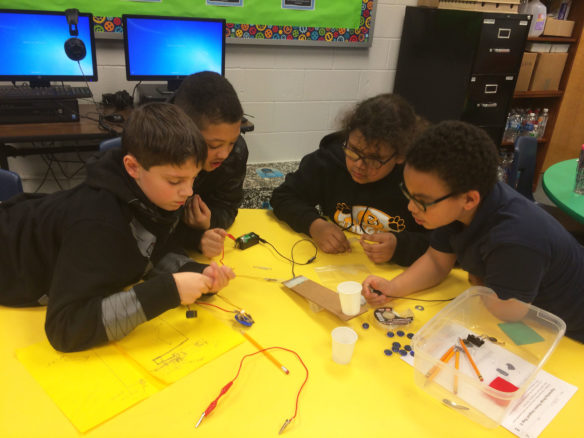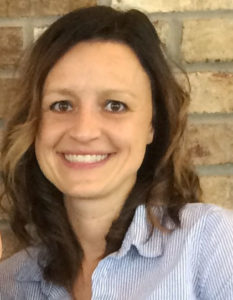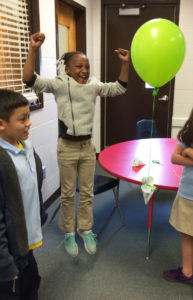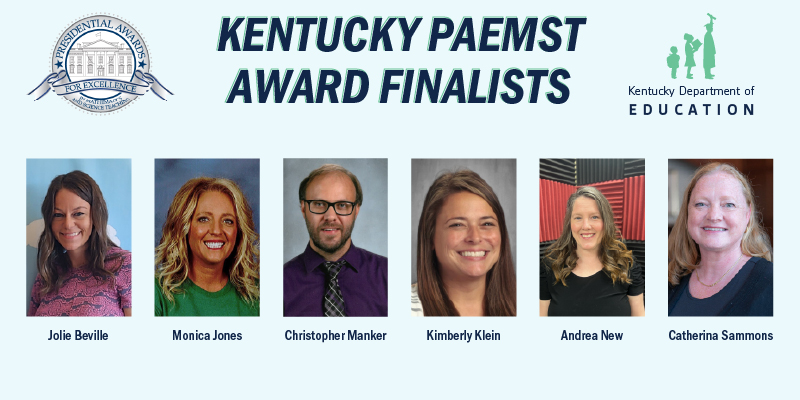
Fourth-grade students at Alex R. Kennedy Elementary School (Jefferson County) become electrical engineers during an Engineering is Elementary unit about designing alarm circuits.
Submitted photo by Erin Bloomer
By Erin Bloomer
erin.bloomer@jefferson.kyschools.us
I have taught computer classes for a number of years. While there are standards by the International Society for Technology in Education, there is no curriculum map laying the groundwork for what I teach. I like that. I enjoy the flexibility of collaborating with teachers and meshing what I do with what is already happening in the classrooms.
Therefore, when the opportunity arose to continue teaching computer classes and start a STEAM – Science, Technology, Engineering, Arts and Mathematics – program in a new elementary school in Jefferson County, I took a breath and leaped.

Erin Bloomer
Alex R. Kennedy Elementary School (Jefferson County) opened in August 2015. In just one year, we have been able to generate excitement in an area in which students had never had any experience. I am continuously asked “Is it our day for STEAM lab?” or “What are we doing in STEAM this week?”
Every K-5 student in the building goes to the STEAM lab. K-2 students go once a week, and students in grades 3-5 attend three times a week every other week, which makes it easier to do longer, more intense units.
STEAM lab lessons are rooted in Kentucky’s Academic Standards for Math and Science, so it absolutely ties back to what the teachers are doing in the classroom. It takes what they are already doing and kicks it up a notch, almost always in a hands-on fashion.
That’s the beauty of no set curriculum. I can tailor what we do in STEAM classes to coincide with science standards in the classroom and beef up their interest in robotics and engineering, all while developing team-building and problem-solving skills.
Students work in teams on almost every project, but now the groups can be configured in countless ways due to new furniture. We are currently the elementary school pilot for STEAM lab furniture in Jefferson County Public Schools. We have tables of various shapes and sizes, stools that wobble and chairs that are barely off the floor. Some of the tables have whiteboard surfaces and there is even a standing desk.
At the beginning of this school year, I created a year-long plan for every grade as a framework, using last year’s lessons as a starting point. It’s written in pencil (which is shocking since the rest of my life is recorded on Excel spreadsheets), because student interest and teacher input are huge driving forces in maintaining engaged students and a collaborative feel to the program.
Collaboration with other educators is absolutely key to the success of the program. It starts in my building with the teachers at each grade level. I will throw out some ideas, get their feedback and then adjust the lessons, projects or units to better fit the needs of the students.
In the district, I bounce ideas back and forth with multiple teachers and coaches – whether it’s informally through text, a quick link through an email or by visiting other schools that are implementing STEAM – to see what we can do to boost our program. Our school is participating in a two-year Kentucky Department of Education STEAM grant with Bellarmine University and through that, we have received materials and made connections to other educators in the district who also are striving to build programs with a strong science and math content foundation.
With this new program, I am constantly finding inspiration for new STEAM lessons. I attended a Kentucky Society for Technology in Education conference in March with the hopes of bringing back solid ideas for the computer and STEAM labs. In fact, it was there that I discovered several ideas for incorporating robotics and coding in the primary grades, such as Bee-Bots. These bee-shaped robots not only teach basic programming, but they also use mats that reinforce mathematics and English language arts standards.

Third-graders get excited after successfully getting a balloon to flink, neither float nor sink, while discovering the principles of gravity. This lesson came from PBS Kids Zoom!
Submitted photo by Erin Bloomer
In March, WAVE3 meteorologist Brian Goode came out to speak to some of our students about the weather, which led straight into a 3rd-grade investigation about clouds. In May, I worked with the Louisville Free Public Library to organize a seven-ring STEAM circus – which is like a pop-up MakerSpace – for K-2 students to celebrate our first year.
By the end of the 2016-17 school year, I will have seen all K-2nd-grade students 25 times and all 3rd-5th-grade students more than 50 times. This amount of exposure builds student confidence about working in a group setting and interest in potential engineering careers exponentially. It transforms reluctance and resistance into participation and a desire to succeed as a team.
Teachers are continuously surprised that the students who struggle in the classroom are the same ones who soar in the STEAM lab. These positive learning experiences allow children to demonstrate their strengths in a different venue with a new set of resources.
Our STEAM lab is this awesome mix of engineering units, robotics and MakerSpace challenges that forces students to work as teams, problem solve, persevere, discover skillsets they didn’t know they had and make connections to classroom learning. The amount of self-confidence built in this room is incredible, and the life skills these students are developing are priceless.
You can follow our STEAM adventures at twitter.com/alexrkennedy1.
Erin Bloomer teaches computer, STEAM, robotics and AP math at Alex R. Kennedy Elementary School (Jefferson County). She has been with Jefferson County Public Schools since 2003 and served as an adjunct instructor for Indiana University Southeast from 2011 to 2015, where she focused on teaching educators how to enhance students’ learning through the use of technology.




Leave A Comment